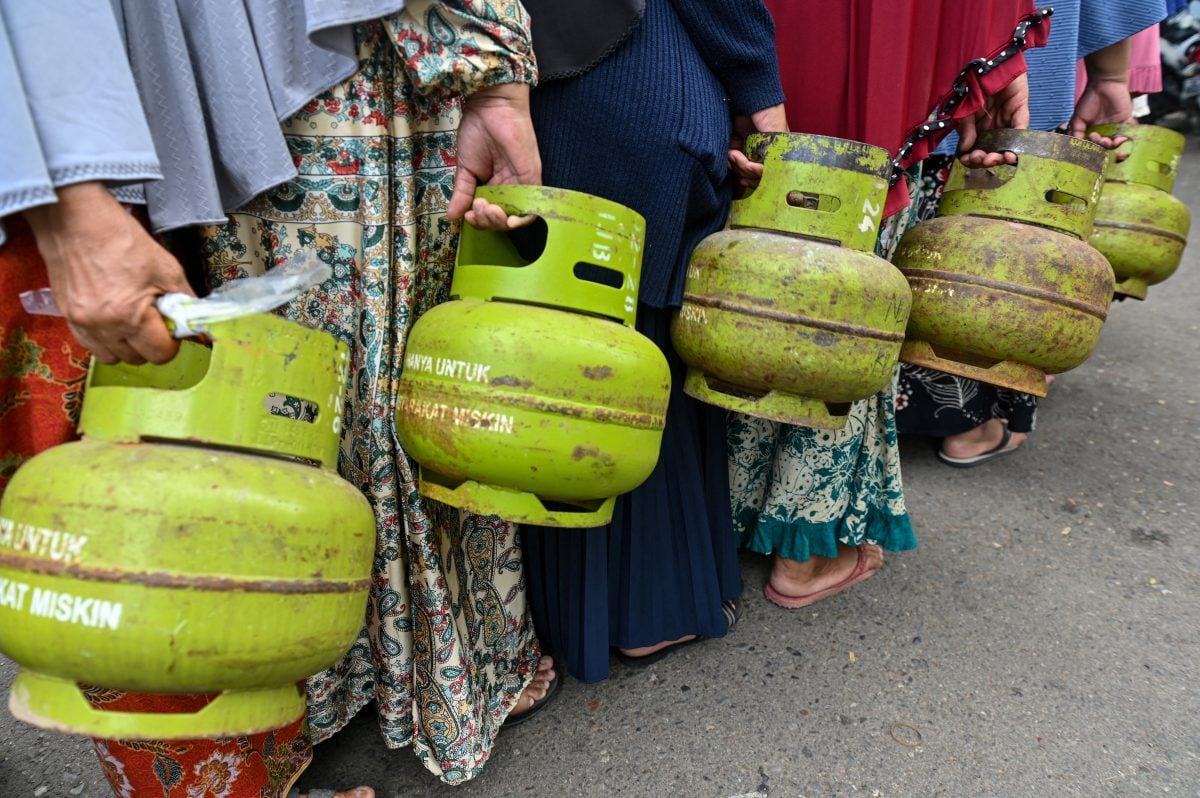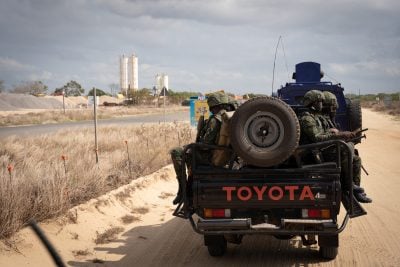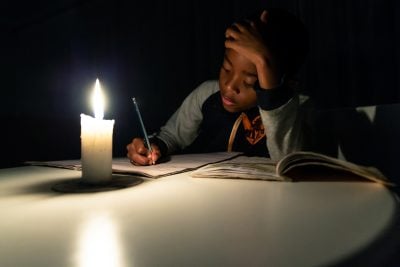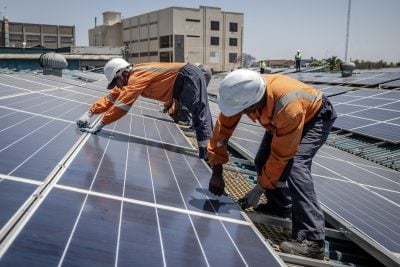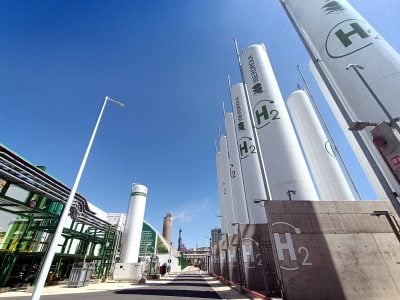In New York in September, a newly formed consortium of US-based energy companies unveiled a $10bn plan to scale-up the use of liquified petroleum gas – better known as LPG – across 10 countries in Africa.
The launch of the USLPG Consortium, which plans to invest in import terminals, storage facilities and LPG cylinders, is the latest sign that LPG is gaining traction as a solution to Africa’s chronic clean cooking problem. Since taking office earlier this year, Chris Wright, the US energy secretary, has been vocal in supporting the scaling-up of LPG in Africa.
Not coincidentally, the United States is the world’s largest gas exporter and American companies are in line to reap considerable rewards if adoption of LPG can increase.
The International Energy Agency (IEA) highlights that around one billion people in Africa still cook using firewood, charcoal or animal waste, often spending hours each day searching for fuels. It estimates that foraging for firewood results in the loss of 1.3m hectares of forest each year.
A high-profile clean cooking summit that the IEA convened in Paris last year led to $2.2bn in funding commitments for solutions. Since then, the IEA says 40 new policies to promote clean cooking have been introduced around the continent.
Amid these glimpses of progress, it is clear that LPG is playing a key role. The IEA reports that three-quarters of those who have gained access to clean cooking in Africa over the past five years have done so due to LPG. Still, LPG is seen by some as a “transitional fuel” – it is a fossil fuel, and produces higher greenhouse gas emissions than an electric stove that is powered by renewable energy.
Health impacts
The lack of access to clean cooking in Africa has a dramatic effect on human health. The IEA states that household air pollution contributes to 815,000 premature deaths each year in Africa.
Daniel Pope, professor of global public health and epidemiology at the University of Liverpool, says the death toll mainly stems from cardiovascular and respiratory conditions that result from chronic exposure to particulate matter, known as PM2.5.
Pope explains there is a “very steep increase in risk at quite low levels of exposure” to PM2.5. Women and girls are most at risk in Africa, since they overwhelmingly bear the burden of cooking.
In the search for solutions, Pope stresses that LPG releases very little PM2.5 compared to burning biomass. “The reduction in risk is huge”, he says. “Switching to LPG is a very health-positive thing.”
Due to the steep increase in health risks once people start doing even a relatively small amount of cooking using unsafe fuels, Pope emphasises the importance of making a complete switch to LPG or other safer methods. One concern, however, is that some of the more commonly used LPG stoves can be too small to cook large meals. In Kenya, for example, small stoves that use 6kg cylinders are popular, yet Pope warns that people will often continue to cook larger meals using traditional methods.
He is therefore in favour of governments promoting double-burner stoves that use conventional 13kg cylinders. The continent, he says, needs to make a clean break from unsafe fuels.
Subsidides required
A few countries in Africa stand out for making progress with LPG.
Renzo Bee, a former executive at Total who now works as a consultant advising the public and private sector on LPG, highlights Côte d’Ivoire as an example that other African countries should look to learn from. The West African nation has seen access to LPG rising from around 50% of the population five years ago, to around 85% today.
Bee says there are several reasons for this success. Firstly, the government accepted the private sector’s preference for a model in which gas cylinders remain owned by the marketer, as opposed to individuals owning and refilling their own cylinders. Secondly, the government agreed to subsidise LPG and keep prices stable.
“It is obvious that people want to have stability in the price,” he says, adding that regulating the price while the market is still developing is “key” to ensuring demand takes-off.
The price of a 6kg gas bottle has remain capped at CFA2,000 (around $3.55) for several years. This amounts to an effective subsidy of around 50% although the exact extent of the subsidy depends on fluctuating international prices. The World Bank gave a qualified endorsement of Côte d’Ivoire’s subsidy policy in a 2022 report, noting that no country has achieved a universal electrification rate without some form of subsidy, and that the same will apply to clean cooking.
Nevertheless, once LPG use becomes much more widespread, Bee argues that price controls can eventually be lifted.
“People will manage to cope with the new price,” he says. “They will not return to charcoal, because they know the convenience of using LPG.”
The need to provide subsidies, even if applied on a targeted basis, is difficult for many governments to afford.
But James Rockall, CEO of the World Liquid Gas Association, argues that a “stable policy environment” is vital to incentivise investment in LPG infrastructure, given the capital expenditure required.
He highlights how Brazil and India have both achieved “quick and massive uptake” of LPG, with nearly 100% access to the fuel, through offering a sound regulatory environment. Both countries have also provided subsidies, he notes, although they have done so using different models. Brazil’s subsidies have been targeted at the poorest, whereas India has offered broad subsidies to all LPG users.
Infrastructure improvements required
Rockall notes that affordability is not necessarily always the biggest barrier for LPG in Africa.
“The problem is often the lack of supply,” he says. Investment in infrastructure is needed to import LPG and distribute it to consumers.
The supply chain for LPG requires port facilities that can handle specialised carriers and offer large, pressurised tanks where the product can be stored. Depending on the size of the market, secondary storage facilities may also be needed near distribution centres. The LPG then needs to be transferred into cylinders at bottling plants. Finally, the cylinders must be distributed to retail outlets where they are bought – and returned – by consumers.
As Africa seeks to emulate these countries in promoting LPG, there are many signs that investment is gathering pace. Several countries, including Kenya and Tanzania, are building large-scale portside storage facilities. And a number of countries are now adopting the ‘cylinder recirculation model’.
This approach “is important because it puts the burden of safety on the cylinder supplier, rather than the consumer,” says Peter George, investment director at Spark+, an impact investment firm that finances clean cooking solutions. “From an economic standpoint, you’re able to be more efficient. You can produce better margins, also decrease the cost for the consumer with this cylinder recirculation model.”
Spark+ recently invested in Henos Energy, an LPG marketing company that has been licensed by the Ghanaian government to supply users with cylinders at retail outlets. Once the consumer has finished a cylinder, they bring the empty bottle back to the outlet, where they can exchange it for a new one.
George says that Spark+ invests in a range of clean cooking solutions, including electric stoves and stoves that burn pellets, as well as LPG.
Even if LPG is not perfect as a climate solution, proponents say it is better than the status quo. A study by the Stockholm Environment Institution in 2023 found that switching to LPG across the Global South by 2040 would have an equivalent impact to removing half a billion cars from the world’s roads.
And George points out that the key advantage of LPG is that it is “readily scalable” – as shown by the increasing pace of adoption in several African countries.
Want to continue reading? Subscribe today.
You've read all your free articles for this month! Subscribe now to enjoy full access to our content.
Digital Monthly
£8.00 / month
Receive full unlimited access to our articles, opinions, podcasts and more.
Digital Yearly
£70.00 / year
Our best value offer - save £26 and gain access to all of our digital content for an entire year!

 Sign in with Google
Sign in with Google 